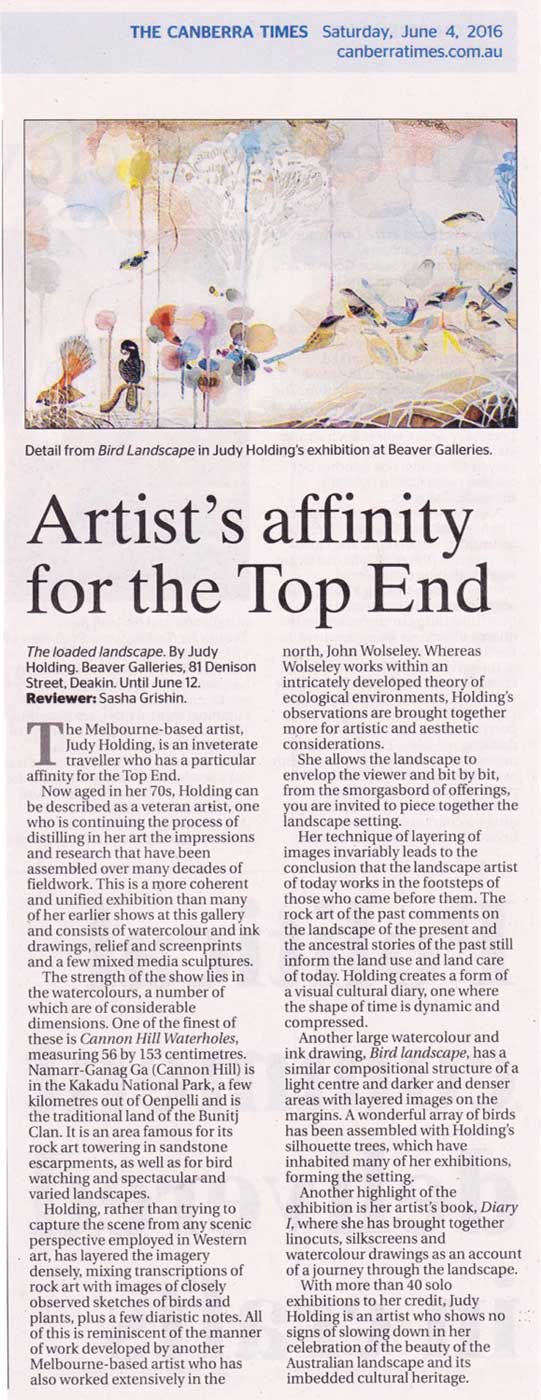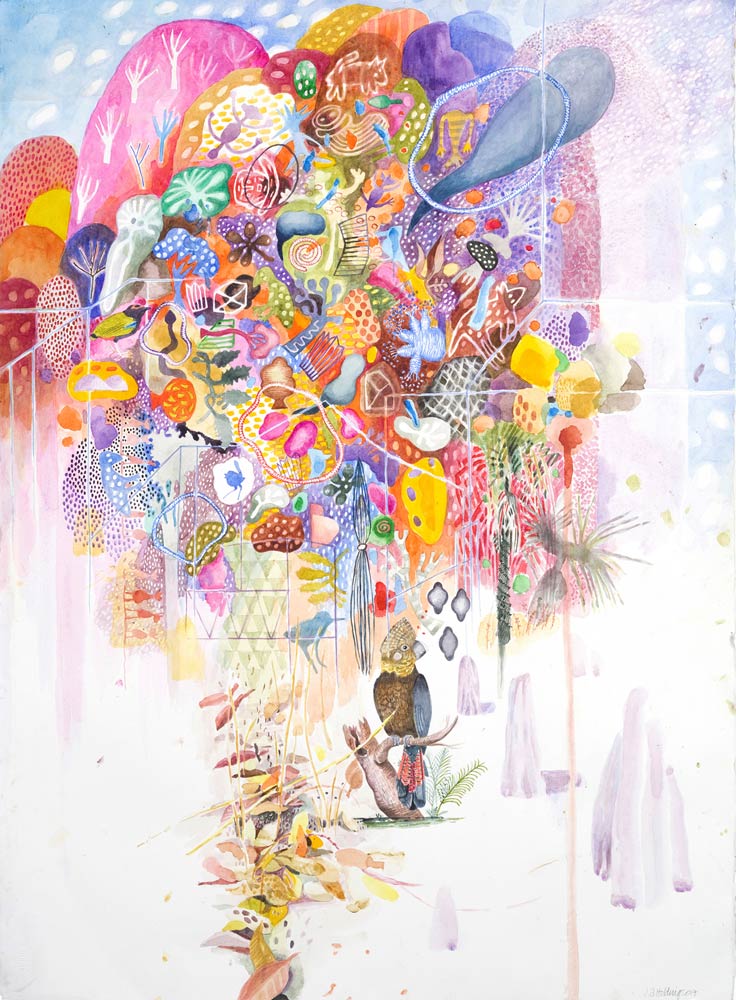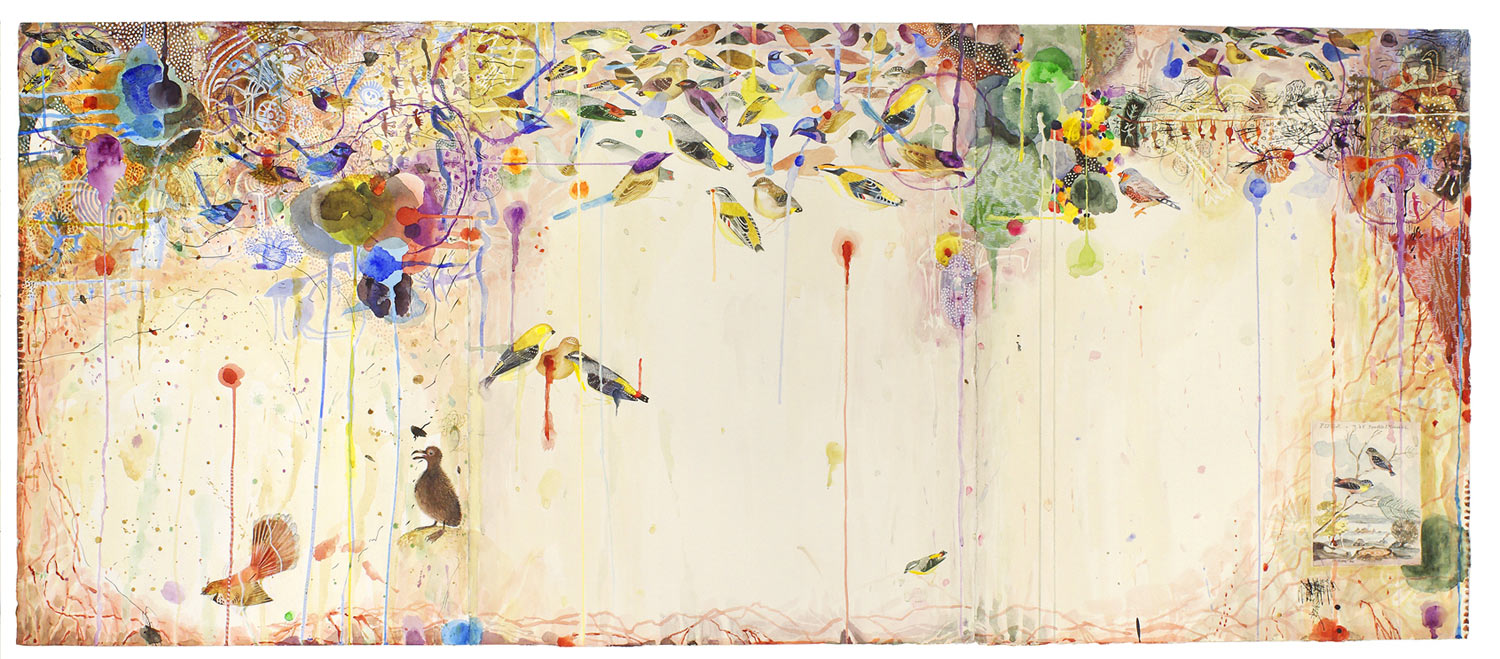Alcaston Gallery proudly presents an exciting body of work by Judy Holding, including new watercolours…
Review of The Loaded Landscape in the Canberra Times
A review of my recent exhibition, The Loaded Landscape, at Beaver Galleries was published in the Canberra Times. Read it online here or below.
Art review: The loaded landscape by Judy Holding at Beaver Galleries
June 3 2016
Sasha Grishin
The loaded landscape by Judy Holding. Beaver Galleries, 81 Denison Street, Deakin. Until June 12.
The Melbourne-based artist, Judy Holding, is an inveterate traveller who has a particular affinity for the Top End.
Now aged in her 70s, Holding can be described as a veteran artist, one who is continuing the process of distilling in her art the impressions and research that have been assembled over many decades of fieldwork. This is a more coherent and unified exhibition than many of her earlier shows at this gallery and consists of watercolour and ink drawings, relief and screenprints and a few mixed media sculptures.
The strength of the show lies in the watercolours, a number of which are of considerable dimensions. One of the finest of these is Cannon Hill Waterholes, measuring 56 by153 centimetres. Namarr-Ganag Ga (Cannon Hill) is in the Kakadu National Park, a few kilometres out of Oenpelli and is the traditional land of the Bunitj Clan. It is an area famous for its rock art towering in sandstone escarpments, as well as for bird watching and spectacular and varied landscapes.
Holding, rather than trying to capture the scene from any scenic perspective employed in Western art, has layered the imagery densely, mixing transcriptions of rock art with images of closely observed sketches of birds and plants, plus a few diaristic notes. All of this is reminiscent of the manner of work developed by another Melbourne-based artist who has also worked extensively in the north, John Wolseley. Whereas Wolseley works within an intricately developed theory of ecological environments, Holding’s observations are brought together more for artistic and aesthetic considerations.
She allows the landscape to envelop the viewer and bit by bit, from the smorgasbord of offerings, you are invited to piece together the landscape setting. Her technique of layering of images invariably leads to the conclusion that the landscape artist of today works in the footsteps of those who came before them. The rock art of the past comments on the landscape of the present and the ancestral stories of the past still inform the land use and land care of today. Holding creates a form of a visual cultural diary, one where the shape of time is dynamic and compressed.
Another large watercolour and ink drawing, Bird landscape, has a similar compositional structure of a light centre and darker and denser areas with layered images on the margins. A wonderful array of birds has been assembled with Holding’s silhouette trees, which have inhabited many of her exhibitions, forming the setting. Another highlight of the exhibition is her artist’s book, Diary I, where she has brought together linocuts, silkscreens and watercolour drawings as an account of a journey through the landscape.
With more than 40 solo exhibitions to her credit, Judy Holding is an artist who shows no signs of slowing down in her celebration of the beauty of the Australian landscape and its imbedded cultural heritage.



